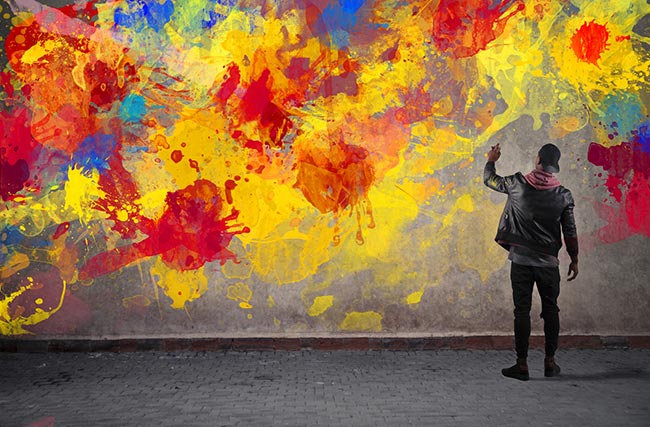In many ways, interior design tends to be very static. In the worst examples, you walk into a room and feel as if you’ve stepped into a museum and that if you dared touch the wall art or actually sat on the furniture (which in these nightmare scenarios usually has thick plastic over the cushions) you would be arrested and hustled away unceremoniously.
Rooms shouldn’t be cold, filled with works of contemporary art that are designed to be viewed – they should be living space where people can sit and chat and enjoy their space. On the other hand, most designers (and home owners) don’t want guests just picking everything up and moving the furniture, either, especially when it comes to the art prints they’ve carefully selected for the walls. But if you learn nothing else from the world of design, learn this: There are always creative options. Instead of going for a room that’s a museum or a room that’s a playroom, slide in-between by making your wall art interactive.
Reach Out and Touch Something

Interactive wall art doesn’t mean some fancy computer display – it just means a tactile installation that guests and family members are encouraged to touch and play with. ‘Tactile’ is, in fact, a powerful concept in interior design. It’s all about texture, one of the main pillars of design theory, and the best and most powerful way that people can experience the textures in your design is to physically touch them. People get to touch your upholstery, your flooring, and your accessories – why not your wall art too? Here are a few ideas to get you started down the right path.
Wall Art as Slider Puzzle
For a large room with a large wall, say with a big couch against it, you might naturally choose a big, bold piece of canvas art – a big family photo, or a wedding photo, or something more artistic. But what if, instead of a single monolithic canvas print, you had it split into lots of smaller ones, each attached to the wall with Velcro tabs. When arranged as intended, they form a gorgeous mosaic depicting your original image. When guests are due to arrive, mix them up randomly, then encourage everyone to try their hand at re-arranging the individual canvas prints to re-form the image. Everyone will have a little fun, and get the sense of rich texture that canvas brings to the room.
Combining Elements

There’s no rule that states you can only have one type of wall art in a room. To complement and jazz up your canvas prints, why not mix in interactive elements like chalkboards? Chalkboards add another texture, and a hanging piece of chalk will inspire your guests to ‘leave their mark’ and have a little fun, all while augmenting your design. You could encourage them to sign their names, and your chalk boards will slowly fill with a record of your guests and the occasions you celebrated, or you could suggest that guests riff on the canvas art right next to the chalk board, replicating it or artistically commenting on it.
Bonus: When someone creates something truly remarkable in chalk, take a hi-res photo of the chalk board, and you have your next gorgeous piece of canvas wall art!
The point is, your wall art doesn’t have to sit flat and speechless on the walls. Come up with creative ways to make it interactive, and your design will sing. When you’ve got a great idea, click here and we’ll get started making your design an interactive reality.


Leave a Reply